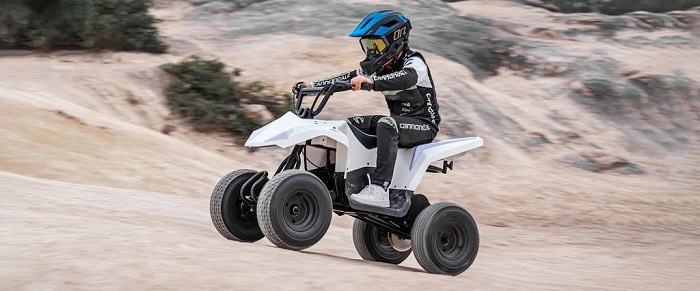How Do Kid-Friendly Gas-Powered 4-Wheelers Differ from Standard Examples

For all ages, gas-powered four-wheelers provide exhilarating outdoor experiences. But models developed for children are quite different from ones made for adults. These kid-friendly versions are designed with particular adjustments, security precautions, and user-friendliness in mind. Safety and control are given first priority in gas-powered 4-wheelers made just for kids—from the engine's power to handling and design. This article explains why these distinctions matter, particularly for young off-road vehicle riders.

Limits on Power, An Important Safety Measure
To guarantee safety, children's four-wheelers are particularly made with minimal power. In order to give smoother acceleration and lower peak speeds, manufacturers purposefully limit engine power. This keeps young motorcyclists under control and avoids risky, fast-paced situations. Limiting power allows children to safely learn the fundamentals of 4-wheeler operation without being overpowered or moving too quickly. These power changes provide parents piece of mind by making these vehicles safer and more accessible for young riders.
Weight and Size Appropriateness for Children
The size and strength of young riders are taken into account in the physical design of kid-friendly 4-wheelers. Compared to standard versions, they are lighter, smaller, and simpler for children to handle. Children's confidence is increased by these lightweight designs, which make it simpler for them to ride the 4-wheeler on various terrains. Lightweight frames improve stability and balance by reducing the likelihood of tipping. Children may ride more safely and comfortably when the weight and size are both reasonable.
Improved Features for Young Riders' Safety
Children's gas-powered 4-wheelers are designed with safety as their first priority. Special safety features like parental remote control systems and speed limiters are often seen in these cars. Speed limiters lower the chance of accidents by enabling parents to establish a maximum speed. To further ensure safety, parents may use remote controls to turn off the four-wheeler in an emergency. To further safeguard kids from accidents and crashes, some models even come with handlebar guards, tight footrests, and cushioned seats. These extra safety features show how important safety is when it comes to kids' four-wheelers.
Controls Made Simpler for Easy Management
Compared to standard versions, gas-powered 4-wheelers have simpler controls for children who are just starting to ride. In order to avoid the necessity for gear changing, kid-friendly 4-wheelers often use automated or semi-automatic gearboxes. Additionally, the throttle and braking systems are made to be more sensitive, giving young riders a sense of control. Children may concentrate on handling and driving when complicated controls are removed. Because of these easier controls, riding is more pleasurable and accessible to beginners.
Designs That Appeal to Children
Children's 4-wheeler manufacturers provide designs that cater to the interests of young riders. For children, the thrill is increased with colors, pictures, and ergonomic seating. These models are attractive and entertaining to ride because to their bright colors and kid-friendly themes. These design elements help kids develop a feeling of pride and accountability when it comes to driving their car. The 4-wheeler becomes a valued asset for young explorers as a result of the emphasis on aesthetics, which adds another level of fun.
Conclusion
Children's gas-powered 4-wheelers are different from standard ones in terms of design, power, safety, size, and controls. To make 4-wheeling safe, accessible, and fun for kids, several changes were made. Manufacturing makes 4-wheeling fun and safe for youth eager for outdoor experiences by highlighting these distinctions.
Comments